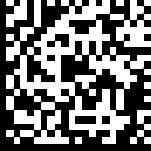GS1 Malaysia – GS1 DataMatrix
Overview
GS1 is a neutral and leading global organisation dedicated to the design and implementation of global standards and solutions to improve the efficiency & visibility of the supply and demand chains globally and across sectors. The GS1 system of standards is the most widely used supply chain standards system in the world. The GS1 System was introduced in Malaysia in 1988. GS1 Malaysia was formed under the aegis of FMM to manage and develop the GS1 standards in Malaysia. The subscribers of GS1 System under GS1 Malaysia comprised of manufacturers, distributors, traders, wholesalers, retailers, statutory bodies, IT suppliers and systems providers.
GS1 DataMatrix
The barcode is the key to product information. Every scan facilitates the speedy retrieval and accurate transmission of information. The GS1 System of standardised item identification and bar coding provide a framework that allows products, services and information to move efficiently for the benefit of businesses and the improvement of people’s lives, everyday, everywhere.
The use of GS1 barcodes have progressed and expanded over the years and its application is no longer just for grocery products. Sectors such as healthcare, defence, telecommunication and agricultural are also using the GS1 System of item identification and bar codes.
Today, more than 1.5 million companies in 150 countries across all industry sectors use the GS1 standards in their daily communications. This represents a total of over 6 billion scanning transactions a day!
With the widespread application of the GS1 standards, there is a need for a new barcode symbology that can cater to the needs of industries that require additional information on the labels but are constrained by space.
With this in mind, GS1 has come up with the DataMatrix which is a two dimensional (2D) bar code which can encode more information but using a smaller space. The GS1 DataMatrix is a 2D bar code symbol specified for use by the GS1 System.
The GS1 DataMatrix can holds large amounts of data in a relatively small space as compared to traditional linear barcodes, and is therefore becoming increasingly popular for a wide range of applications including aerospace, pharmaceutical, U.S.A. Department of Defense, and medical device manufacturing.
GS1 DataMatrix barcodes are also used on trade items that have limited space for product marking such as healthcare items not intended to pass through retail point-of-sale (POS) and for parts that need to be tracked in a manufacturing process. Only camera based scanners (2D imagers) can read and decode GS1 DataMatrix barcodes. In addition to their relatively small size, GS1 DataMatrix barcodes utilize sophisticated error correction algorithms to compensate for lost of missing data or code damage. This means that print quality and contrast are much less critical than with traditional linear barcodes. With error correction, GS1 DataMatrix barcodes can reconstruct up to 20% of damaged characters, while traditional barcodes have no error correction capabilities.
GS1 DataMatrix barcodes are suitable for nearly all printing processes from offset to thermal transfer, and even direct marking by ink-jet or laser. The symbol offers readability even with low contrast, and is readable in a 360 degree orientation.
GS1 Malaysia Wisma FMM No. 3, Persiaran Dagang, PJU 9 Bandar Sri Damansara 52200 Kuala Lumpur Tel: 603-6286 7200 Fax: 603-6274 1266 / 6274 7288 Email: gs1malaysia@gs1my.org Website: www.gs1my.org



